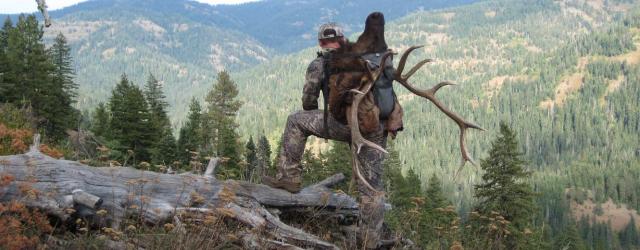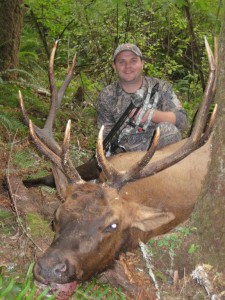Gear Failures

“I surely would have killed that bull, but this, that, or the other thing went wrong!”
How many times have you been a part of a conversation that conveyed a similar message to the quote above? I know I have not only been a part of those conversations, but lived through a couple gear disasters that could have been easily avoided if I would have had the knowledge or experience to avoid them.
Fact is, there are two types of hunters out there in my opinion:
1) Hunters who started early without a mentor of any kind and learned many a lesson by simply failing (I personally fall into this category).
2) Those who had some kind of mentor that could steer them away from some of the simple lessons they would have otherwise learned the hard way.
I sometimes wish I fell into the second group, however the lessons I’ve learned throughout the years make me the gear skeptic I am today.
 I will never forget the first bull I ever called in by myself when I was 13 years old. My neighbor gave me a bow for cutting his grass throughout the summer. He didn’t know much about the bow and neither did I. I began shooting that bow all summer and somehow I thought I would take up bowhunting. I actually got pretty good with that thing throughout the summer. I shot nearly every extra minute I had and was convinced I would be able to kill an elk. Season was getting close and it was time to put broadheads on. I screwed on a bunch of mismatched broadheads with high anticipation for the opening day of Oregon archery elk season.
I will never forget the first bull I ever called in by myself when I was 13 years old. My neighbor gave me a bow for cutting his grass throughout the summer. He didn’t know much about the bow and neither did I. I began shooting that bow all summer and somehow I thought I would take up bowhunting. I actually got pretty good with that thing throughout the summer. I shot nearly every extra minute I had and was convinced I would be able to kill an elk. Season was getting close and it was time to put broadheads on. I screwed on a bunch of mismatched broadheads with high anticipation for the opening day of Oregon archery elk season.
On opening day, I made it to a small meadow close to my house where the elk spent most of their summer and were still frequenting. I saw a lone five point bull feeding several hundred yards away and just knew I was in luck. I made a couple horrible sounding calls and that bull literally came running to me. Not exactly sure how I kept it together, but I managed to nock an arrow and begin to draw my bow. The problem was every time I would nearly get to full draw my arrow would come off the rest. In the end, I tried to draw on that bull three different times with the same result each time. Every time my broadheads (that I never tuned or shot prior to season) came by my riser, the blades would hit the riser and the arrow would be knocked off my rest. That bull survived another day because I had zero knowledge of the importance of shooting broadheads prior to hunting with them. Of course, with the mass media we have in today’s world, a new hunter could probably pick up these handy little tips and not encounter problems of this nature. However, 22 years ago there was little information readily available for a young kid like myself, or at least I didn’t know how to access it. I remember sitting at the base of that tree with tears running down my face thinking something like that would never happen again just like it was yesterday. The situation above is probably not my most serious gear failure, but I sure remember it like it was.
As time goes on and a person accumulates more and more gear failures, one can really begin to see what it takes for a piece of gear to be a customary part of your arsenal. There are so many products on the market these days it can be overwhelming to sort through them all and decipher what is junk and what is not. Personally, the KISS acronym (keep it simple stupid) always applies to the gear I select, whether it be for backpacking, stand hunting, or spot and stalk. I don’t like gadgets that are used for a sole purpose. I don’t like anything that makes noise. I don’t like gear that isn’t consistent in any weather. The list could go on and on. Basically, research the gear you are looking at. After you purchase the gear make sure it works as you thought it would and make sure it will withstand repeatable use. If possible, buy gear that runs on the same type of batteries. For example, your flashlight, headlamp, and GPS can all be interchanged if needed. Believe me, if you hunt long enough, it will be needed. Try to set up your gear in a way it can be used another way if possible. For example, I was very skeptical of drop away arrow rests when they first came out. I used a 3D Rover rest that I could simply reverse the spring tension and have a traditional base again in moments if something ever went wrong with the cord. Choose your gear very wisely as it is one of the few aspects of hunting that is within your control. We all know many of the circumstances we encounter while pursuing game is completely out of our control; let’s control the factors we are able to.
Good luck out there!!
